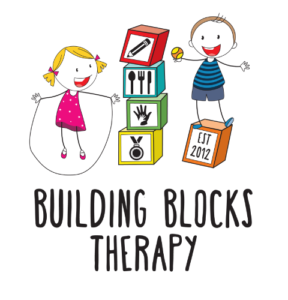Learning to tie your shoelaces is a significantly challenging task in life, however it is a self-care task that can bring a great sense of independence and achievement for your child.
Tying shoelaces is a complex task that involves many different skills. Some of these include fine motor strength, finger isolation, bilateral coordination, attention, concentration, visual perception, working memory, visual motor integration and emotional regulation.
There are multiple different ways to tie your shoelaces. It is important to choose the method of shoe lace tying that will best suit your child. If your child struggles with bilateral coordination or finger strength which is required to hold the two loops, try using the single loop or push and tie method. See below different methods to tie shoelaces:
Below are some tips to help your child to achieve this milestone, increase independence and be successful in tying their shoelaces.
Tip # 1 – Backwards Chaining
- Backwards chaining is especially beneficial for children who become frustrated easily or with a lack of confidence as it provides them with immediate success.
- Backwards chaining involves completing all of the steps involved except for the last step of the process e.g. completing the final pull to tie shoelaces.
- Once your child has mastered this final step then practice the second last and the last step e.g. pulling the lace through the hole and pulling the laces tight.
- Continue this process working backwards through the steps until your child can complete all steps independently.
- This technique involves you modelling and showing your child the steps involved and providing verbal instructions to assist with this learning and skill development. The shoe can be placed in lap or on table during this process (it does not need to be placed on a foot).
- It is important that the child has mastered the step before moving on and that your child can also remember or use visual reminders to follow the steps involved.
- This technique provides your child with immediate success which can encourage and motivate your child to continue learning this process.
Tip # 2 – Video Modelling
- The use of videos can be beneficial especially for children who are visual learners. You can stop and pause the video at different steps and provide support and model these actions to your child.
- There are a wide variety of different videos on YouTube with different methods including the double loop, single bunny ear and push pull.
- There are also lots of videos with songs to help your child learn and remember the steps involved.
- Below are some examples of videos you could use:
- Tying Shoe Laces Song – https://www.youtube.com/watch?v=BeSkBOYUlag&t=67s
- How to Tie your Shoe Laces – https://www.youtube.com/watch?v=Ygqs_UvjWyM or https://www.youtube.com/watch?v=Ygqs_UvjWyM
Tip # 3 – Different Coloured Laces
- Using 2 different coloured laces in a shoe can be beneficial when learning this skill so that your child can easily see and distinguish the difference between the two laces. This is especially helpful for children who have difficulty with visual discrimination.
- This can be done by cutting two different coloured laces and tying them together.
Tip # 4 – Practice, Practice, Practice!
- Shoe lace tying like many other life skills requires practice.
- Try not to practice this skill when you are busy or in a rush. Practice after school rather than in the morning when everyone is busy getting ready.
- Remain calm and relaxed when practicing.
- Model the process on your own shoes.
- Continue practicing with shoe in lap or on the table not on foot. Shoelaces become tighter when wearing the shoe which makes it more challenging.
- Consistency with the words you use is important e.g. bunny ears, loops, twists, knots etc.
- Try to avoid using “right” and “left” side unless your child understands and is proficient at differentiating the difference between right and let sides.
- Instead use different coloured laces to distinguish between the two different sides or place a sticker on your child’s dominant side and use “sticker” and “non-sticker” side.
- Practicing with stiffer and thicker shoelaces first will be easier for your child before moving onto more elastic and thinner laces.
- Use of videos or visuals to help with practice.
- Can also try attaching two pipe cleaners (two different colours) to your child’s shoes. The pipe cleaners are stiffer than normal shoelaces and therefore can make it easier if your child drops or has difficulty holding the laces when making the loops, as the pipe cleaners keep their shape.
- Practicing bow tying with your children with other activities is also great practice such as wrapping presents, tying ribbon in hair, tying ribbon on a doll or teddy etc.
Alternatives to Shoelace Tying
Some children may find the task of shoelace tying too challenging. If this is the case, this certainly does not mean your child will not be independent with the self-care task of putting their shoes on and taking them off. There are a variety of alternative shoelaces below that do not involve the tying process that may be beneficial for your child to still achieve this task and increase their independence.
- Curly laces (turns lace up shoes into slip-ons)
- Hickies shoelaces (turns lace up shoes into slip-ons)
- Xtenex (elastic lock cord)
- Zubits (uses magnetic lacing)
- Lock laces (use a fastening system to adjust tension of laces, turns lace up shoes into slip-ons)
- Velcro Shoes
If you feel that your child would benefit from occupational therapy sessions to work on the skills involved in the task of shoelace tying, please contact the Building Blocks Therapy Clinic for more information.
Carly Pettingill
